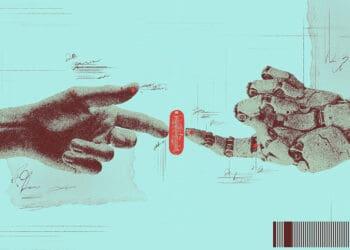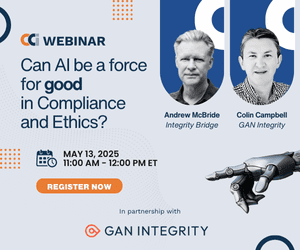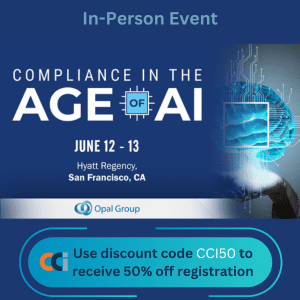Implementing conversational AI as part of your organization’s recruiting process doesn’t have to be difficult. Mya Systems’ Mike Pauletich discusses how to make it happen.
Conversational artificial intelligence (AI) is widely recognized as an essential component of the modern HR technology landscape, yet purchasing and implementing a recruiting AI solution can still seem daunting to even the most technologically forward-thinking HR leader. Human Capital Trends shared that while 72 percent of HR and business leaders saw the value in implementing AI, only 31 percent felt prepared to address it.
Popular concerns with AI include: implementation disrupting existing recruiting operations, difficulty integrating with a legacy applicant tracking system (ATS), challenges in data management and difficulties deploying into new job openings or client companies. With those concerns in mind, there are steps you can take to ensure AI for recruiting is one of the easiest solutions for your organization to configure, integrate and scale in your processes.
Have a Clear Goal
The largest companies in the world can’t afford to tolerate a technology implementation that disrupts their recruiting operations, and more often than not, small to medium-sized companies cannot either. Once an organization decides it is ready for AI, the initial step toward a smooth implementation is to have in mind a clear goal with tangible steps toward reaching that goal. Take a step back, think “big picture” and ask critical questions: Which organizational processes can be enhanced? What specific problems need to be solved?
It’s important to work closely with your technology team and partners to answer these questions and carefully evaluate your organization’s needs. Identifying the role of AI is a strategic process that should address high-level goals as well as specific department needs.
Increased response time, personalized candidate experience, driving overall efficiency, saving time for recruiters, delivering a great experience for hiring managers – while adopting AI can accomplish all of these, it’s important to prioritize based on the company’s specific needs in order to select the right vendor.
Do Your Research
With everyone claiming to offer AI-powered solutions, it can be easy to get lost in the noise. And adopting AI for HR is no small decision; it typically requires multiple stakeholders and a lengthy evaluation phase. Pay attention to any red flags early on in the process: references that don’t relate to your business, poor communication, lacking details about how the technology works and more.
Another thing to take into consideration during evaluation is integration. Rather than disrupt recruiter workflows, your AI-powered solution should free them from mundane tasks like screening and scheduling candidates for interview, which allows recruiters to focus on delivering a high-quality candidate experience by having personal interactions with candidates. Poorly designed or overly complicated software can be a nightmare for recruiting and staffing teams to manage, as well as for the groups that support them. Similarly, overly simplistic chatbots can ruin your company’s employer brand. Furthermore, staffing customers often need to deploy conversational AI for client companies, which can span multiple industries, such as health care, trucking or logistics. An important factor in your research should include whether or not a potential AI partner can deploy the solution for clients in a timely manner.
Choose Wisely
If you do it right, you’re buying a partnership rather than a product. Make sure you’re entering into an evolutionary relationship instead of focusing on one fixed output. Your company’s needs will change, so there must be a commitment to grow and adapt together for successful implementation and an ongoing relationship with your AI partner. To succeed in a world changing at an exponential rate, HR organizations and staffing companies need to increase their rate of change as well, and their AI partners can help enable them to do so.
With the goals you made at the onset of this research in mind, it’s important to also think through how you’re approaching digital transformation at your company, and part of that includes knowing the difference between different HR chatbot technologies. The difference between chatbots and conversational AI (CAI) is crucial. Most chatbots today are a software program that automates conversations with humans in order to answer basic questions with predetermined answers — basically a multiple-choice format. With these, communication is one-way and confined to the questions you expect candidates to ask. But in our tight labor market, you can’t always predict what information is valuable to a candidate. This is where CAI comes in: to serve a deeper purpose than simply answering FAQs.
With a combination of artificial intelligence and natural language processing, candidates are engaged in a way that wasn’t previously possible with existing bots; initial candidate conversations can be complex, rather than a simple input and output. A CAI recruiter “learns” the nuances of our language, taking into consideration how we say something, not just what we say. With this system, the candidate experience begins with a dialogue that feels more human and less robotic. Choosing an AI partner most likely requires additional executive buy-in, and knowing this difference arms you with the info everyone needs to make a wise choice.
Prepare Your Team
Once organization goals and AI systems requirements are aligned, the next step to an effective implementation is team communication and preparation – assurance around how incorporating new HR technology into your recruiting process or other HR functions can give your company a competitive edge. Thinking outside the box when hiring and staffing is the only way to find and hire quality candidates in the current talent shortage. Make the benefits and value propositions clear, maintain honesty and transparency around the new technology and clearly outline the upcoming changes in the current workflow.
The second component of team preparation is communication among your hiring teams and your AI partner. This relationship is key to the training process. Your partner’s customer solutions team should set up trainings with hiring and staffing teams to go through what the new recruiter portal entails, including how to check for upcoming interviews, configure scheduling and calendar integrations, review applications, read conversation transcripts and more.
Measure and Adapt
The final step to getting the most out of your AI recruiter is deciding what you will measure to ensure that your goals are achieved. It is critical that you and your AI partner are aligned on not only what KPIs will be measured, but also how those KPIs are calculated. By aligning on the success criteria with your chosen partner, all parties will have a clear view of how well you are tracking toward your goals. This allows for course correction and optimization of your AI tools to achieve the desired outcomes.
The Final Word
Building a strong relationship with your AI partner is just like building a strong relationship with candidates: It’s the key to achieving mutual, long-term success. Having a clear goal in mind, knowing the differentiators between AI solution providers, getting your team prepped and on board with AI recruiter integration and establishing the key metrics to track your success are all crucial components of making the best AI technology decisions for your company.



 Mike Pauletich is currently VP of Global Alliances & Partnerships at
Mike Pauletich is currently VP of Global Alliances & Partnerships at 









